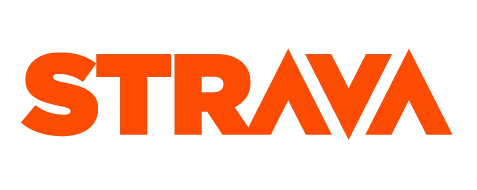Hey there, welcome to day 2 of making the best version of your endurance coaching business during COVID-19. To learn more about this idea go back and read my blog on "You'll need the Best Version of Your Endurance Coaching Business Because of COVID-19".
Yesterday I talked about the value ladder conceptually and broke that down a bit to explain how you need different price points to progress your clients up and down a value ladder.
Today in my video I'll give you some specific examples of those products and services that fit into the first and middle rungs of that ladder and also how to practically create them and implement them in Training Tilt so you can start selling them.
I've transcribed the full video below but this includes screen demo's so is best viewed in the video itself.
Video Version
Text Version
Setting Up The Value Ladder Concept on Training Tilt
So, I'm going to take you through like an example and how to set that up inside the Training Tilt platform. Now, if you're not a Training Tilt customer this might still be useful. I mean, you might have another e-commerce platform that you could do some of this in, which is fine. But I'm going to use Training Tilt as an example.
Conceptualizing Your Bottom Rung
So first what I'm going to do is the bottom of the value ladder. I was saying yesterday, with isolation going on at the moment in most countries in the world, something like a product very specific to that is something you should focus on now. So the example I'm going to use is a series of Zwift virtual workouts that you can sell for a one-off price of $19. In this example, I'm going to use a whole week's worth of Zwift workouts -- one for every day of the week. And I'm going to think about how I would emphasize it's value if I had customers and I was really selling it. I'd be talking about how it's seven days of variety for Zwift so you don't get bored while you're at home -- that sort of thing. In your case, think about, what is people's problems right now? They can't go out and train properly, so they'll probably be on Zwift anyway. But it might be a bit boring. And while you could get heaps of workouts from Zwift, they might not have or they are not being created by people with the same expertise as you as a coach. Just because they can access to these types of things from somewhere else doesn't mean that it's good quality or want to get it from a different source. Because if they trust you, then they'll want to grab it from you. Anyway,
Creating Workout Files With ZWOFactory
Unfortunately, the Training Tilt Workout Builder isn't quite ready yet, so I can't use that as an example. But there are lots of other platforms that you can use to build your workouts. I'm going to use this one here called Z-W-O Factory. This is a free one, and thanks to Matt McNeil, he's created this workout builder so you can build Zwift individual files at no cost. So, check out zwofectory.com. I've built a couple of workouts in ZWO Factory. It's pretty easy to use. Click on things here, use these tools up here to delete items or move them left or right or whatever volume down here. Zwift works in a percentage of FTP, so that will work well with anyone who then uploads it because they'll have to be set up in Zwift. So I would create like a bunch of Zwift workouts in here. I'd just use your existing types of workouts that you use but turn them into Zwift files. So you might already have those, but we just want to package them up.
Importing the Workout Files to Training Tilt
So, now I've got all of these workout files -- I've got these three but I think you should do more. But just, for example, I got these three workouts here that I want to compress into one folder. In Windows, you can go send to a compressed zipped folder. On Mac, it'll be slightly different. But what you want is all of the workouts in a single file. Once you have that single file, you want to get to the content files page. You want to upload your file so select upload and choose the zip file. Upload that -- it's pretty quick. Then you want to edit it and give this file a nice clear name like Isolation Zwift Workouts. And if you want all your clients to automatically get access to this you can just leave it as is. So if your existing customers have an account and you've turned on the shared files, then they'll get access to that. But if you don't want them to get it -- if you want it to be something that they pay for, then you want to make sure you hide it from clients so they don't get it for free. Even if you don't hide it, you can see who gets access to it using the group access here, as you do with a lot of other stuff. And if you want to give it away for free for whatever reason you can also allow public access. Be sure to save the work you do.
Uploading an Image
Now it's time to upload an image. I've also created this image using a tool called Canva. It just makes it really easy to create graphics without needing to hire a graphic designer. Especially in times where you need to act pretty quickly, you don't want to have to wait for a graphic designer to get back to you. There are lots of templates you can use in Canva. All I did was change the text and change the color scheme to match my branding. Once you upload that image, you might want to put a description before you save the file. But this isn't the end product, so it doesn't matter. This is just the file itself. First, go-to products and create a new product category (if necessary). In this case, I've created a new product called 'Virtual Training.' Next, go-to products. I want to create a new product called 'Isolation Zwift Workouts for a Week.' Choose the category 'Virtual Training.' Since I want this to appear at the top of my store, I want to give it a display order of -1 just in case there are any other products in front of it already. Now, set up the description of the product. You want to put more thought into this compared to me, but I'm just going to put something short so that this video isn't too long. Now, I'll set the price at $19 because that's what I think it's worth. Again, you want the product(s) of your bottom rung to be anywhere between $12 to $20. Now that you have your product set up, you have some options here, like it's free for your existing clients or whatever.
Making This a Downloadable Product
Once you've set that up, click next and you will be reviewing the plans download section. I'm going to go to the downloadable file where I'm going to select the file that I created before -- Isolations Zwift Workouts. Upload the same image you created and then Save that and now we've officially got the product set up. Now, we can go to the store. This is what appears on your public website and, if you can see, here is the Isolation Zwift Workouts here, ready to buy already. It's filtered by category as well, so you can actually create a bunch of these. Up here, you can see that when we filtered it by category, we've got all the virtual training ones here. So if you are going to publish this on social media or whatever, and you wanted to publish more than one product, you can use this link, then it would show all the products for Virtual Training because virtual pieces of training are a pretty good thing to be selling with everyone in isolation at the moment.
Conceptualizing Your Middle Rung
Now I'm going to talk about an example for the second rung of the ladder--we're talking somewhere between, say, $50 and $200. So, you want to make this product have a little bit more value -- maybe something more personalized or interactive. The bottom rung of the ladder was pretty much just a downloadable set of files, which is great for that value. But now we want to take it up a notch. Since I want to relate this example back to what's happening at the moment, the example I'm going to use has to deal with isolation and virtual workouts. With you probably having a little bit more time now, and since you're probably training anyway, you could do live coaching sessions in Zwift for the next 30 days. You might offer $99 for a price point or something like that. I mean just figure out how many people you might be able to get onto it and then set the price at that. So if you are going to do workouts every day for the next 30 days, and maybe you thought you could get 10 people on board, maybe something like $99 might be a good price point for that. We don't have a lot of time to be testing this out -- but you could ask your existing clients what they think of a price point like that. I think something like that might be a good option because you know it needs to be reasonably priced, but also enough so it's worth you putting the effort into setting up the Zwift group or something like that. And it doesn't have to be Zwift. It could be something like that or even just on online membership. For example, if you don't want to go as far as creating live workouts, you could just create an online membership. Just give people access to a bunch of training plans instead. So it could be, again, $99 that you probably want to give it for a longer time. Maybe $99 for three months with excess to maybe five different training plans. They could be virtual training plans, or running plans, or cord workout plans. You know, just try to cater or focus on what's happening at the moment. For this example, I'm going to go through and do the live Zwift examples. I like that idea.
Setting Up Rung Two on Training Tilt
We're going to set this up with membership plans. So a membership plan is basically something that your customers can sign up to automatically and then they get access to a few different things within the platform -- however you want it to look or feel. So the first thing you should do is go to people, then client groups. Create a client group because client groups are how you control permissions. I'm naming this Live Zwift Coaching, then save. Now, to go back to e-commerce, membership plans. You'll need to have all of your payment gateways and stuff set up already. I'm not going to go through that now, but if you need to find out how to set up the payment gateway, check out our article here. I'm going to call this plan '30 days of Live Zwift Coaching'. Then you would put a good description of what that is. In the payments section, you'll see a few options here. For this example, I'm just going to select stripe. You can actually make this a recurring payment, but in this instance, people want a better certainty around pricing and stuff. They might not want to continue afterwards, but it's up to you. But for this one, because we've decided it's going to be 30 days worth, I'm going to turn on these enable fixed-length settings, which means that they get access for a limited time and they just pay a one-off price. I'm going to say $99 and that this expires after 30 days. So 30 days worth of workouts. And then if you're not doing the Zwift one, you just want to give them access to stuff, you can select which training plans they get access to here. Again, I won't go through how to create a training plan in this video, but you can visit this article to learn more. In group membership, we want to choose the one that we just created, Live Zwift Coaching, in case we want to set some permissions on content. Then you can also do other stuff like give them an option of selecting a training plan, and that could be an additional price like that. So this is not if you're doing the Zwift thing -- if you were just doing like an online membership. And when they sign up they get to choose one of these plans, and maybe there will be an additional cost to the general pricing that we set up here. That's the basics of it. There's our support guide on this that goes through all of the advanced details, but I won't go through that now. This is just a little bit of practice on the concept of the value ladder.
Beneficial Training Tilt Features
So when you set that up in Training Tilt, that automatically generates like a sales page for it, which we've got here and then it's got the description the pricing, sign up and stuff like that as well. You could just go and advertise this now. You don't want to spend too much time on it because you want to get it out quickly. Go advertise that now and get people signing up and start your online Zwifts tomorrow. And even if there are only one or two people who do it tomorrow, the next day, they might be three, the next day four. But if people hear it, if people do it and love it, you should offer some sort of way as a kickback if you can get their friends to sign up as well -- that sort of thing. So that's it. Then when you do that, you've got like a default sign up page here as well. On your public website where all of these show up just automatically so you've got multiple different memberships. You could also use that link to promote it; and here's the Zwift one here. And then, if you wanted to, you can also send them straight to the payment page, not the sales page, which is pretty much where they just sign up. I selected a training plan, but you wouldn't do this for the Zwift one. That's how that works. Anyway, so that's the sign-up page.
Publishing Plans as Products on the Online Store
Another thing that I think you can do as an additional option for specifically for this 30 Days of Live Coaching one is you can actually go back to products and have it so it publishes it in your online store as well as on your sign up page. So let's create another product here. We can call this Live Online Zwift Coaching. The category we can put that under virtual training as well. Then, we'll put that is a negative one. So that shows up right next to the one from the previous bottom rung of the ladder. Because when people visit that page some of them might want to start on the bottom rung, and others might want to jump to this middle rung. So you want to present both to them because different types of people want to do different types of things. So let's go next here. We will put that as $99, the same price as we set up the other one and I'm going to go next and then we want to scroll down to membership plan here. We want to link this product to a membership plan. So we select the membership plan we've just created. Add the appropriate image and save it. And now when we go to the store, and we filter by virtual training again, we've got the Live Online Zwift Coaching and the Isolation Zwift Workouts both in the store as well as the membership plans. And then we see here because it's linked to a membership plan, there's an online membership. So then you click to view the product, the details, pricing and then when you click sign up, it takes them to the payment page that I showed you before. Remember that this training plan one shouldn't be here for this example, but it should be there for a normal membership. Anyway, that's it. So that's rung one and rung two of the Value Ladder. These are just some ideas that you might want to do, and you'll probably have your own ideas. But hopefully, this little demo shows you the value of how you can see that up in your Training Tilt account. And if you don't have a Training Tilt account, now is probably a good time to sign up for a trial. If you need any help, let me know. I'm happy to work through these with you like on a call or something if you need the help. That offer's obviously available to my existing customers as well as new customers. But yep, hopefully, that helps and then I will see you tomorrow.
Side Note
Oh, forgot to say sorry, just quickly -- I'm not going to cover the third rung of the value ladder just because most coaches already have the third rung in place. Like, that's their one-on-one coaching or their premium coaching services. So I've just left that out. Just wanted to mention that. Alright. Thanks. See you tomorrow.
Take our Free "Authentic" Marketing Course for Coaches
Designed for endurance sport coaches. Marketing doesn't need to be pushy. The best marketing simply creates a win-win relationship between you and your customers. Take the simple 6 part course to learn more.













